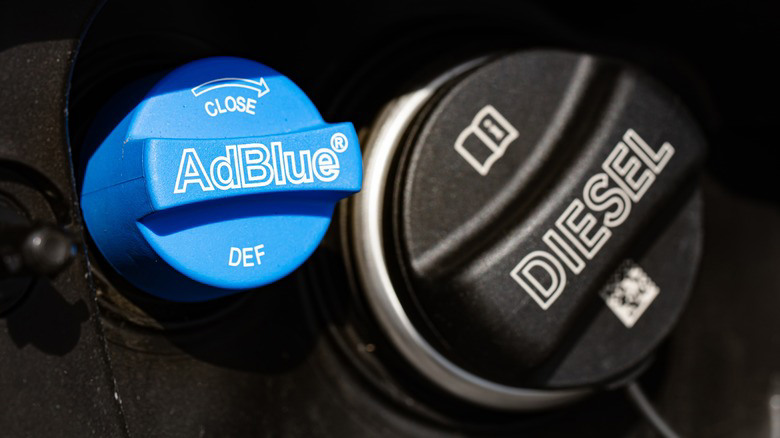In the intricate world of diesel engines, where precision engineering meets the demands of rigorous performance, one substance stands out for its pivotal role in ensuring compliance with environmental regulations: Diesel Exhaust Fluid, commonly referred to as DEF. Comprising a mixture of urea and deionized water, DEF is not a fuel; rather, it is an essential additive utilized in Selective Catalytic Reduction (SCR) systems to reduce nitrogen oxides (NOx), thus facilitating cleaner emissions. While its importance cannot be overstated, a few unfortunate mishaps have occurred when drivers unintentionally introduce DEF into their fuel tanks. But what really happens in such a situation? Let’s delve deeper into the DEF disaster, exploring the catastrophic implications of this mix-up and uncovering the reasoning behind such mistakes.
Firstly, it is critical to understand the substance itself—DEF is not intended for combustion. Instead, it works in conjunction with the exhaust system of diesel vehicles. When it is injected into the exhaust stream, DEF vaporizes and breaks down into ammonia and carbon dioxide, ultimately reacting with the NOx emissions to convert them into harmless nitrogen and water vapor. This chemical transformation is engineered to occur under very specific conditions, and introducing DEF into the fuel system creates a cascade of unfortunate events.
When DEF finds its way into the fuel tank, the primary concern is the chemical incompatibility between DEF and diesel fuel. Diesel is a hydrocarbon-based fuel, whereas DEF consists of urea and water. When mixed, DEF can lead to a series of detrimental chemical reactions. The first and most immediate risk is that of crystallization; urea tends to crystallize when exposed to heat or pressure. Thus, if DEF is introduced into the fuel tank, it can begin to form solid deposits, clogging fuel filters and injectors—not to mention potentially damaging the fuel pump.
As these crystals build up, they can obstruct the normal fuel flow, leading to a plethora of engine troubles. Drivers may experience stalling, loss of power, or even complete engine shutdown, leaving them stranded and facing expensive repairs. The severity of these issues often translates to hefty costs, as engine components may need to be cleaned or replaced entirely. Repair bills can quickly escalate, sometimes reaching thousands of dollars, depending on the extent of the damage.
Furthermore, the introduction of DEF into the fuel system can result in unintended reactions that compromise the integrity of the fuel itself. The water content in DEF can dilute diesel fuel, adversely impacting its combustible properties. This dilution can lead to inefficient combustion, characterized by rough idling, reduced fuel economy, and increased emissions. As the engine struggles to cope with this altered fuel mixture, the potential for long-term damage increases considerably.
Aside from the mechanical failures, the psychological impact of such a blunder is notable. Many drivers are unaware of the significant differences between diesel fuel and DEF, which could lead to this catastrophic mix-up. One might find this situation fascinating—why would someone, in this age of information, confuse two seemingly distinct substances? This brings us to the larger conversation of how information is absorbed and processed by individuals in certain contexts. The world of automotive maintenance is rife with jargon and complex systems; even seasoned drivers can find themselves overwhelmed.
The tragic reality is that many individuals may not even be aware of the existence of DEF until it’s too late. This gap in knowledge is an important consideration. Perhaps it’s a result of a reliance on technology; many drivers trust that their vehicles will alert them to potential problems, neglecting a fundamental background knowledge of their vehicle’s specific needs. The sheer complexity of modern diesel systems, designed to meet stringent emissions regulations while still delivering power, can obscure basic maintenance principles.
Equipped with the knowledge of potential disasters rooted in the misconstruction of DEF and diesel fuel, prevention becomes of paramount importance. Education is key; diesel fuel systems are not mere tanks of liquid and combustion. They require expertise and understanding. Drivers need to be vigilant and attentive when refueling, ensuring they know which substances are being handled. Keeping the two compartments—fuel and DEF—clearly delineated is essential, and labeling can serve as an effective preventative measure in garages and fueling stations alike.
In instances where DEF has mistakenly entered the fuel tank, immediate action is crucial. If a blend is suspected, the vehicle should be towed without attempting to start the engine. Any further attempts at operation can exacerbate the damage. Even in the age of quick-fix solutions and roadside assistance, education on this topic reaps priceless benefits—awareness eliminates negligence. Raising awareness about the functions and differences of DEF and diesel fuel can reduce the frequency of such mishaps.
In conclusion, the integration of DEF into the diesel landscape undeniably marks a significant step toward greener automotive technology. However, negligence and misunderstanding can turn a routine operation into a nightmare of colossal proportions. By demystifying DEF and emphasizing its role distinct from that of diesel fuel, we relive the broader narrative of responsibility in the automotive world, underscoring the need for awareness and vigilance in vehicle maintenance. Building a potent mix of curiosity and knowledge about these intricate systems can allay fears of mishaps, fostering a culture of automotive prudence in drivers everywhere.
